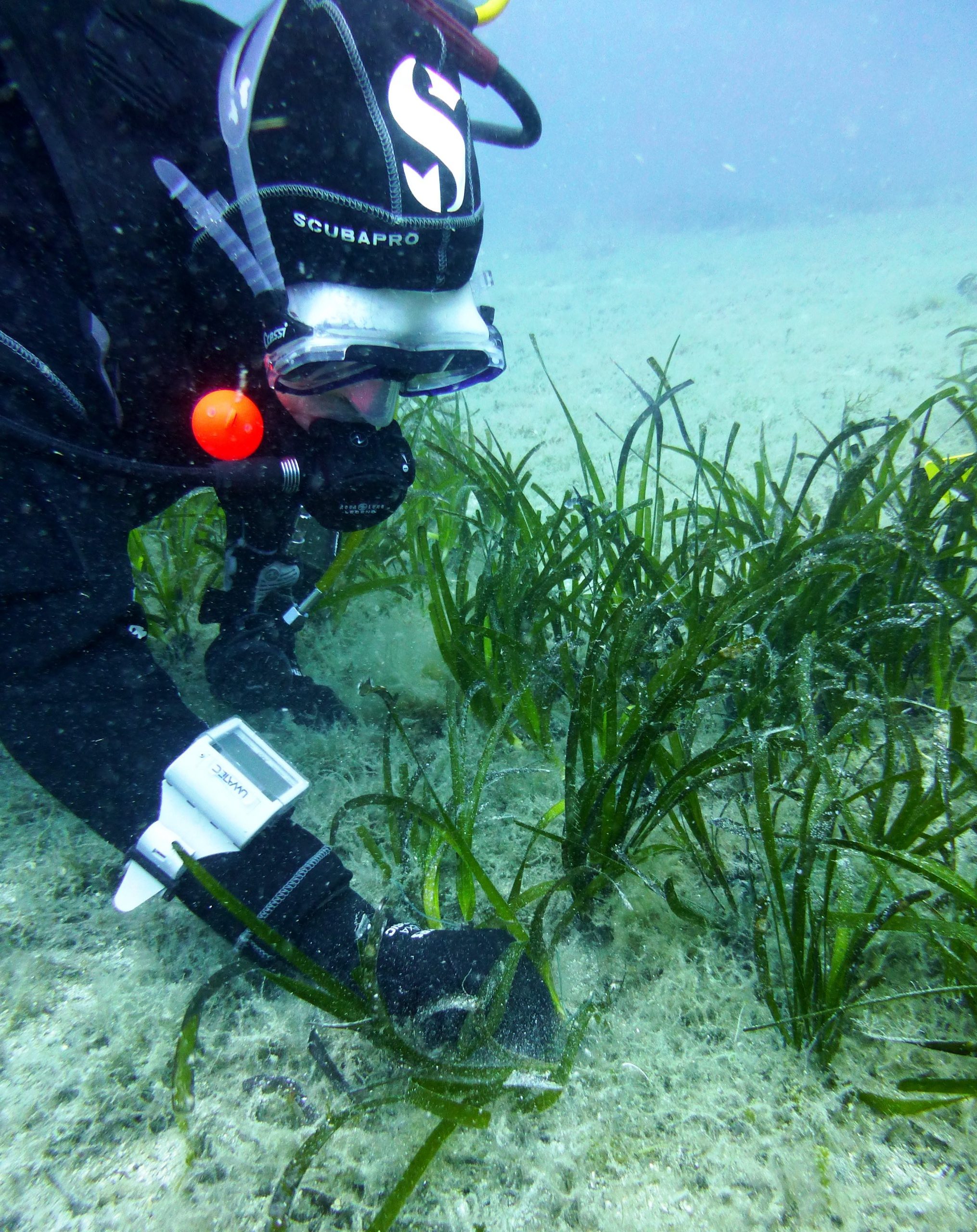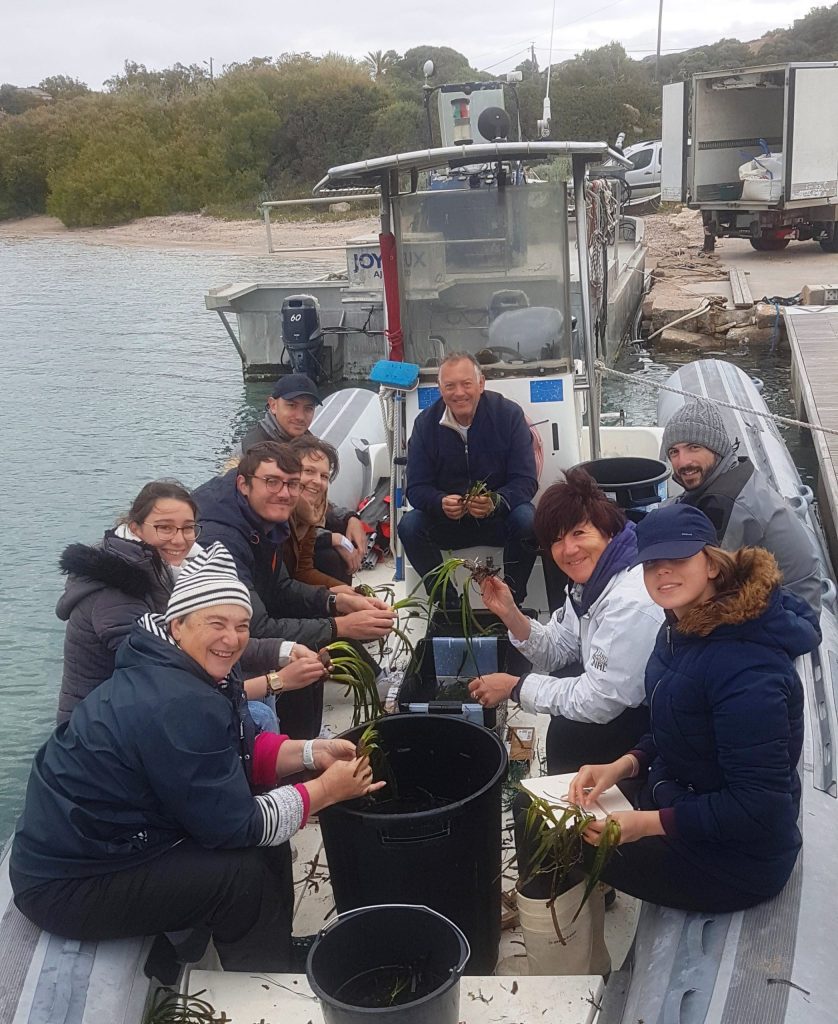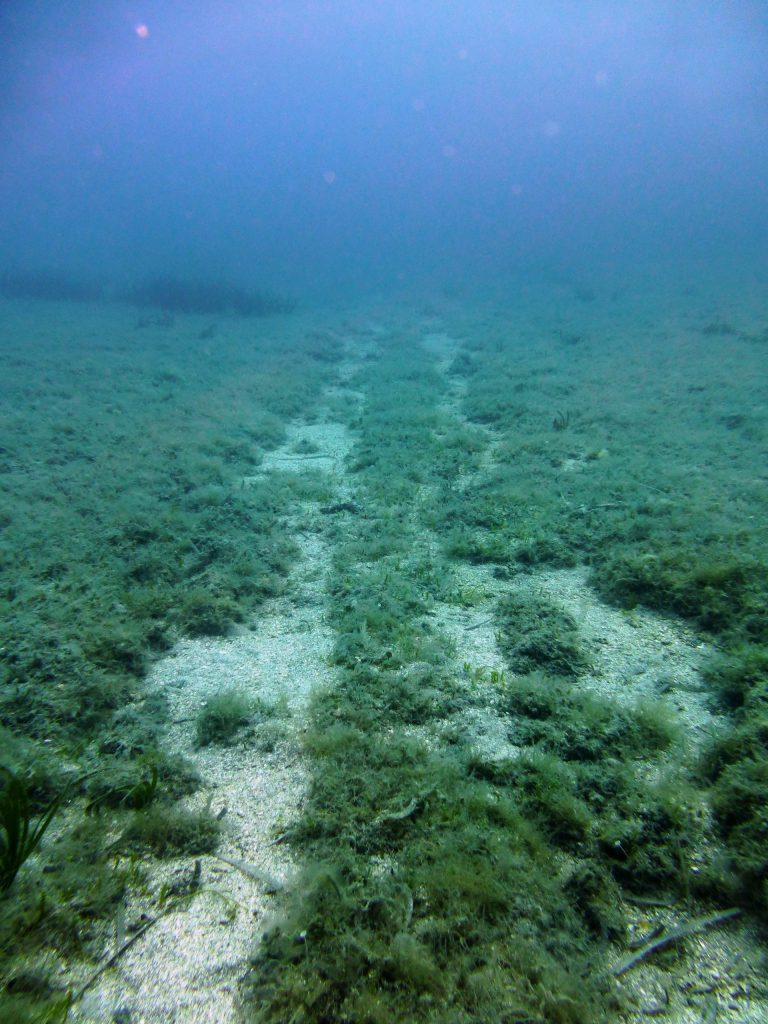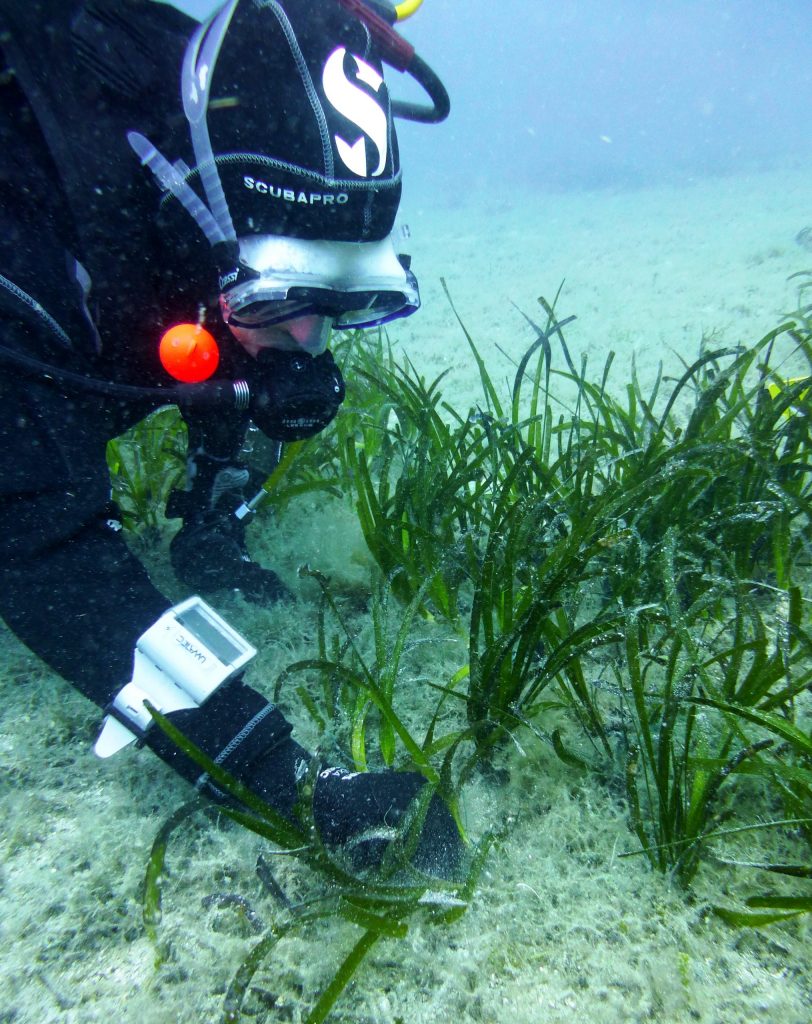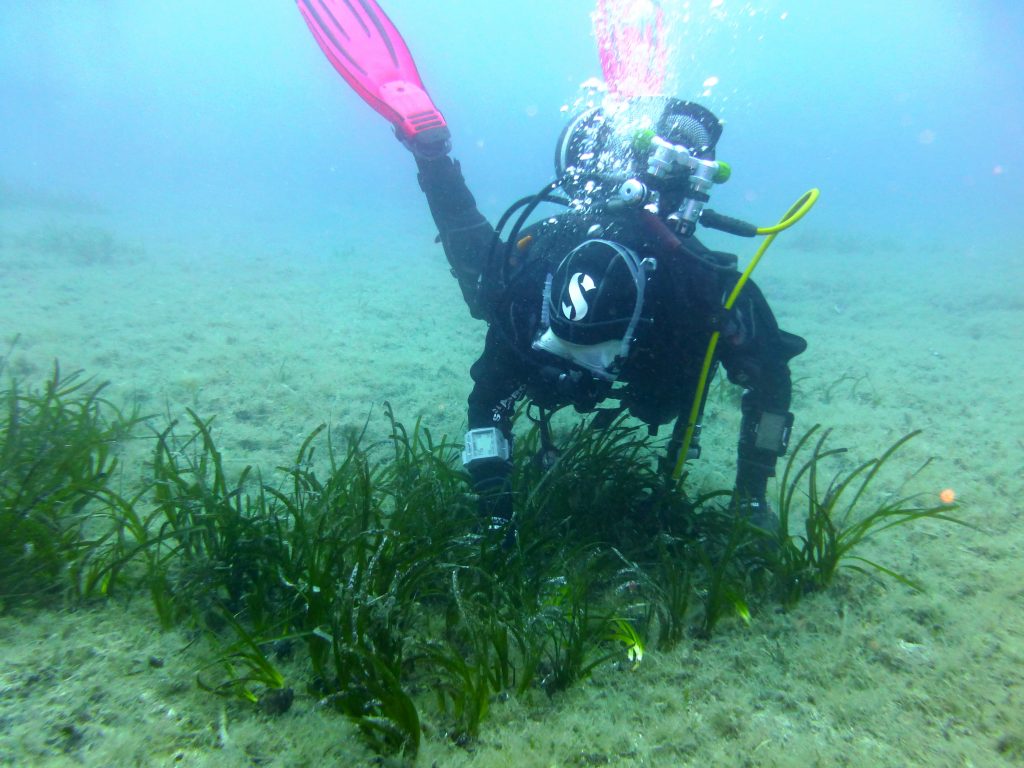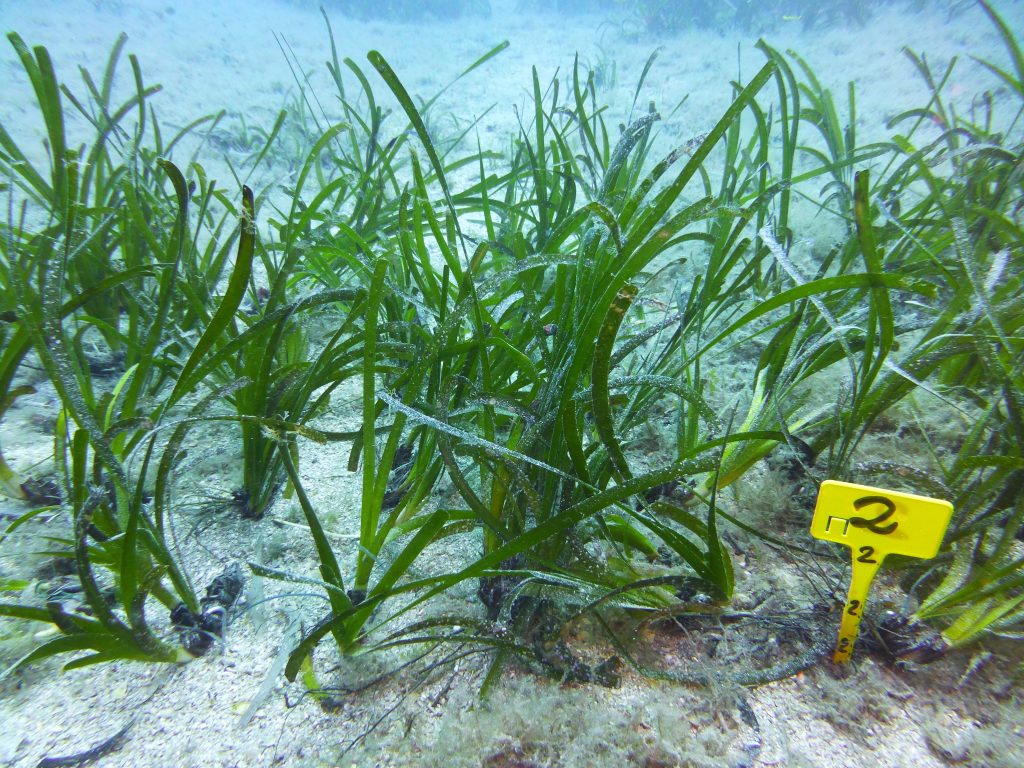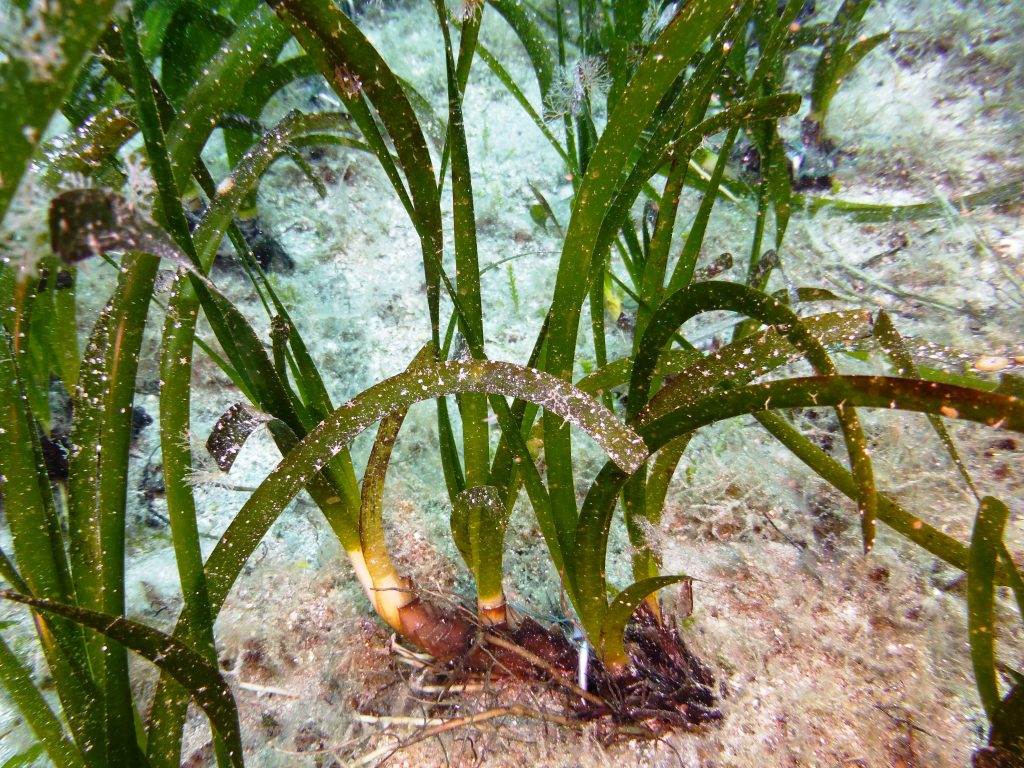The objectives of this project, led by Prof. Gérard Pergent from GIS Posidonie and the University of Corsica Pasquale Paoli, are to test at a single location different conservation strategies and restoration methods (management of the substrate, cuttings) of degraded Posidonia meadows, and to assess their ecological and socio-economic benefits to secure the provision of ecosystems services by seagrass beds. Several restoration methods of Posidonia meadows will be tested in order to assess their effectiveness in a study site at the bay of Sant’Amanza (Corsica Island, France). This project will optimize the conservation of the island’s natural heritage and maximise the delivery of ecosystem services provided by Posidonia meadows, but it will also serve as a pilot project for many Mediterranean regions.
The project is structured in three successive phases:
Phase 1 – Spring 2021: Workshop on strategies for strengthening carbon sinks in the marine environment and more specifically on the restoration of Posidonia meadows;
Phase 2 – Implementation of different restoration methods on Posidonia meadows in a pilot site at the bay of Sant’Amanza (Corsica island, France);
Phase 3 – Workshop to define long-term restoration and communication strategies with a multitude of stakeholders.
THALASSA Marine research participates as a scientific project partner in charge of carrying out a field-base experiment according to a protocol developed from exhaustive experiments on nearly 4000 cuttings transanted in situ as part of the PhD thesis of Heike Molenaar at the University of Nice-Sophia Antipolis. The protocols that will be used by the other scientific teams from Italy (Biosurvey S.r.l.; ISSD “Anna Proietti Zolla”) and Spain (Instituto Mediterráneo de Estudios Avanzados / CSIC-UIB (Balearic islands)) will be compared with those used by THALASSA Marine research by analysing the survival rates of cuttings and the transplant fixation systems so as not to generate additional impacts on the site. The method we recommend guarantees the survival and development of cuttings at rates greater than 70% in the long term, provided that all the parameters required for harvesting, handling, preparing the cuttings and re-implantation in a favorable environment are respected favorable (Molenaar, 1992 ; Molenaar et al. 1993 ; Molenaar & Meinesz, 1995).
During phase 2 of the RENFORC project initiated in April 2021, THALASSA Marine research transplanted more than 1000 Posidonia oceanica cuttings in the bay of Sant’Amanza (Corsica, France) with the logistical support of the various environmental services in Corsica. The 1000 cuttings represent between 3000 and 5000 Posidonia oceanica shoots transplanted to restore an overall surface of 150 m2 of dead matte. We will come back next spring to monitor the transplants.
This project is funded by the Setec Foundation under the aegis of the Fondation de France and will be carried out in close collaboration with the Corsican Environment Office and more particularly the department “Espaces Protégés” on sites benefiting from surveillance (eg NATURA 2000 sites, Réserve naturelle des Bouches de Bonifacio), to optimise long-term management of carbon sinks by the Corsica Region. Other partners of the project are the French Biodiversity Office and Collectivité de Corse.
Link to SETEC : https://fondationsetec.org/2021/07/09/renforcement-des-puits-de-carbone-en-milieu-marin-renforc-par-le-g-i-s-posidonie/
Presentation of the project by UNIVERSITÀ DI CORSICA : https://eqel.universita.corsica/article.php?id_art=4636&id_rub=900&id_menu=0&id_cat=0&id_site=34&lang=fr
& presentation of the project partners : https://eqel.universita.corsica/article.php?id_art=4637&id_rub=900&id_menu=0&id_cat=0&id_site=34&lang=fr
References:
MOLENAAR H., 1992. Etude de la transplantation de boutures de Posidonia oceanica (L.) Delile, phanérogames marines. Modélisation de l’architecture et du mode de croissance. Doctorat des Sciences de la Vie de l’UNSA, spécialité Biologie Marine, Nice. 221 p.
MOLENAAR H., MEINESZ A.& CAYE G., 1993. Vegetative reproduction in Posidonia oceanica. Survival and development in different morphological types of transplanted cuttings. Botanica Marina, 36 (6) : 481-488
MOLENAAR H. & MEINESZ A., 1995. Vegetative reproduction in Posidonia oceanica. Survival and development of transplanted cuttings according to different spacings, arrangements and substrates. Botanica Marina, 38 : 313-322.


